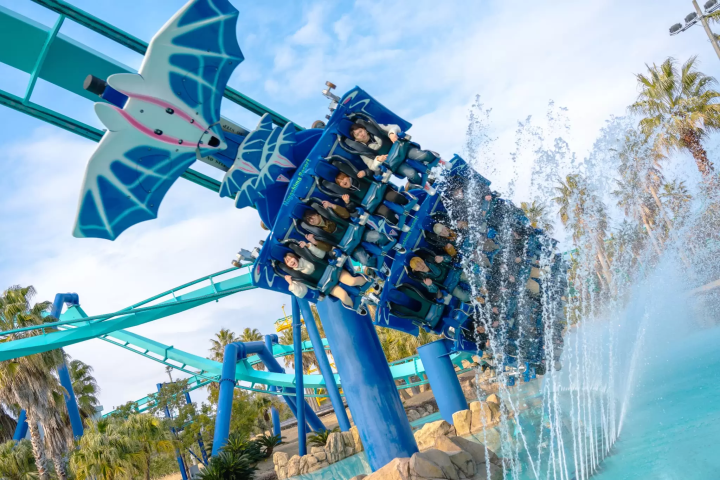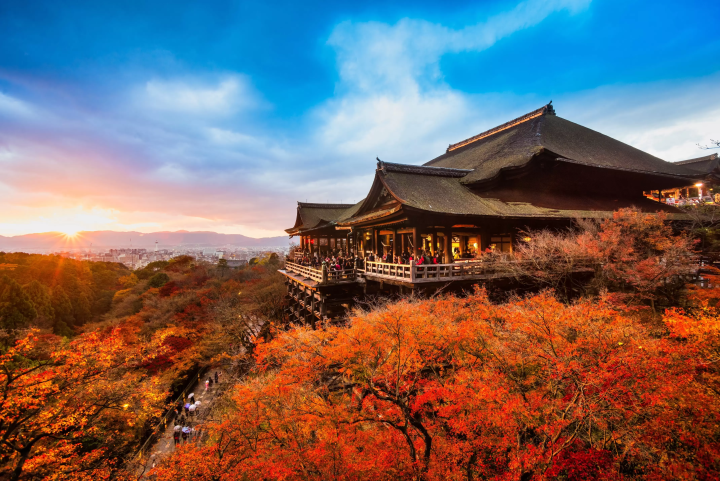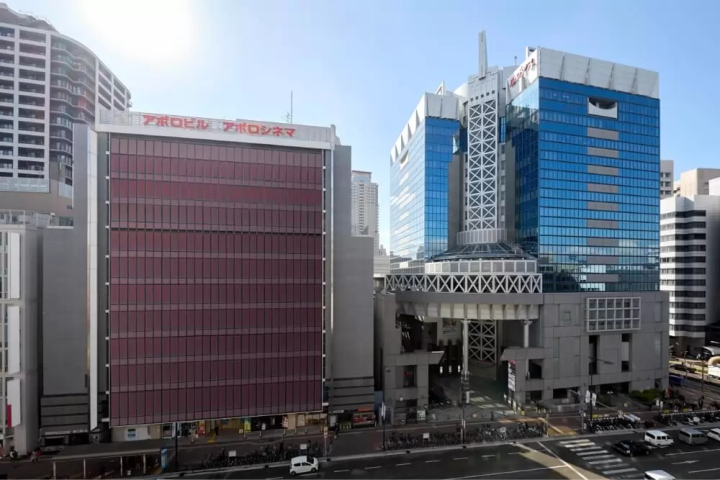[Hiroshima/Sightseeing] Shrine building on the sea! What are the characteristics and highlights of the World Heritage Site “Miyajima Itsukushima Shrine”?
![[Hiroshima/Sightseeing] Shrine building on the sea! What are the characteristics and highlights of the World Heritage Site “Miyajima Itsukushima Shrine”?](https://resources.matcha-jp.com/resize/720x2000/2023/12/08-155806.webp)
The beautiful vermilion-painted shrine building looks as if it is floating on the sea. The charm of Itsukushima Shrine is the atmosphere that takes you back to the Heian era. Its imposing shrine building and beauty that harmonizes with the surrounding landscape are worth a visit. Here we will introduce the characteristics and highlights of Itsukushima Shrine, which is designated as a World Heritage Site.
[Departing from Shin-Osaka Station] [Train + Sightseeing] Round trip using Sanyo Shinkansen World Heritage Site Aki Miyajima Free Plan Day trip
1. Itsukushima Shrine, a world heritage site with a beautiful shrine built on the sea
![[Hiroshima/Sightseeing] Shrine building on the sea! What are the characteristics and highlights of the World Heritage Site “Miyajima Itsukushima Shrine”?](https://resources.matcha-jp.com/resize/720x2000/2023/12/08-155783.webp)
Itsukushima Shrine is located on Aki no Miyajima, one of Japan's three most scenic views, and its symbolic presence. Its symbol is the scenery of a shrine on the sea, which is rare in the world. The bright vermilion-painted shrine building stands proudly against the backdrop of the blue sky, the sea, and the green mountains, and the beauty of the harmonious combination of these is worth a visit. Itsukushima Shrine has a long origin and is said to have a history of over 1400 years. It has been revered by people since ancient times, and even though it has been hit by wars and disasters, it has been restored each time. It has great historical value as a reminder of the Heian era, and was registered as a World Heritage Site in 1996. Before the coronavirus pandemic, it was one of the most popular tourist spots in Japan, with over 4 million tourists visiting each year.
Itsukushima Shrine can be reached by boat from Hiroshima City or Hatsukaichi City. From Hiroshima Station, take the Sanyo Line to Miyajimaguchi Station and take the ferry from JR Miyajima Ferry Terminal, which is a few minutes' walk away, or take a high-speed boat from Peace Memorial Park or Hiroshima Port. While traveling, you can also enjoy the view of Itsukushima Shrine from the boat.
【basic information】
Name Itsukushima Shrine
Address 1-1 Miyajima-cho, Hatsukaichi City, Hiroshima Prefecture
Contact information: 0829-44-2020 (company office 9:00-16:00)
WEB Itsukushima Shrine official website
1-1 Why was Itsukushima Shrine built on the sea?
![[Hiroshima/Sightseeing] Shrine building on the sea! What are the characteristics and highlights of the World Heritage Site “Miyajima Itsukushima Shrine”?](https://resources.matcha-jp.com/resize/720x2000/2023/12/08-155807.webp)
Itsukushima Shrine was built on the sea because Miyajima itself was revered as a sacred object. Precisely because they worshiped nature and used it as a place of worship, shrine buildings were built on the sea rather than on land in order to avoid the sacred objects. The untouched primeval forest remains, conveying its ancient appearance to the present day.
There are several mountains on the lush green Miyajima, but the view from the observation deck at the top of Mt. Misen (535 meters), the highest peak, is spectacular. You can enjoy a 360-degree panoramic view of not only the city of Hiroshima but also the islands floating in the Seto Inland Sea. At the top of the mountain, there are Misen Main Hall, which was founded by Kobo Daishi (Kukai), Gumonjido Hall, where he is said to have practiced for 100 days, and strange stones such as Kuguri Rock.
To reach the summit of Mt. Misen, you can walk along the mountain trail or ride the Miyajima Ropeway. There are three climbing routes, each taking approximately 1.5 to 2.5 hours depending on the route. Recommended for those who have plenty of time and those who want to enjoy the virgin forest. The Ropeway gets off at the final stop, Shishiiwa Station, halfway up Mt. Misen, and then climbs to the top of the mountain.
【basic information】
Name Miyajima Ropeway
Address: Momijidani Park, Miyajima-cho, Hatsukaichi City, Hiroshima Prefecture
Contact 0829-44-0316
WEB Miyajima Ropeway official website
1-2 A shrine with a history of over 1400 years
Enshrined at Itsukushima Shrine are the three goddesses of Munakata, who are the gods of maritime safety, financial fortune, and entertainment. It appeared in ancient times in the Chronicles of Japan, and is said to have been born during a vow between Amaterasu Omikami and Susano-no-mikoto. It is said to have been founded in 593 during the Asuka period by Saeki Kuramoto.
Fast forward to 1146, when Taira no Kiyomori was appointed as the governor of Aki and had great faith in Itsukushima Shrine, and it was built into its current form. As the power of the Heike clan increased, retired Emperors Goshirakawa and Retired Emperor Takakura began to visit, and the culture of the capital, such as architectural styles and bugaku, came to be brought with them.
1-3 Its appeal as a building with outstanding sculptural beauty
![[Hiroshima/Sightseeing] Shrine building on the sea! What are the characteristics and highlights of the World Heritage Site “Miyajima Itsukushima Shrine”?](https://resources.matcha-jp.com/resize/720x2000/2023/12/08-155786.webp)
Shinden-zukuri is an architectural style representative of the Heian period. Shinden-zukuri is a wooden structure on stilts, consisting of a tainoya built around a shinden and a corridor called watado that connects it. The elegant and delicate style, with its bright vermilion paint that leaves an impression, was often used in the homes of aristocrats at the time. Itsukushima Shrine includes a Maroudo Shrine, a stage, a music room (a place where musical instruments are played), and a soribashi bridge. Take a leisurely walk through the corridors and enjoy the peaceful atmosphere.
The symbol of Itsukushima Shrine is the large torii gate that towers over the shallow cove. With a height of 16.6 meters and a weight of approximately 60 tons, it is said to be the largest wooden torii gate in Japan. The six pillars that support the total weight are not embedded in the sand, but are simply placed in place. Please take a look at the wisdom of our ancestors, who used stakes and stones to stabilize the ground under their own weight. The current Otorii is the 9th generation, rebuilt in 1875 (Meiji 8).
1-4 Different ways to enjoy at low tide and at high tide
Itsukushima Shrine is a place where you can enjoy it in completely different ways depending on the tide. At high tide, the elegant shrine building appears to be floating on the sea, and at low tide, you can walk up to the large torii gate. It is said that there are three ``Mirror Ponds'' that appear only when the tide is low, so you may want to try looking for them.
Tide times and tide levels change depending on the season. Although the ebb and flow may occur at night, the illuminated Itsukushima Shrine is even more mysterious. If you would like to know the tidal times, please refer to the tide table posted on the Miyajima Tourism Association website.
1-5 Shinto rituals reminiscent of the Heian era
![[Hiroshima/Sightseeing] Shrine building on the sea! What are the characteristics and highlights of the World Heritage Site “Miyajima Itsukushima Shrine”?](https://resources.matcha-jp.com/resize/720x2000/2023/12/08-155790.webp)
Kangen festival
It's not just the shrine that gives you a sense of Heian elegance. Itsukushima Shrine holds various rituals. Bugaku and Shinto performances are performed by dancers wearing Heian costumes, and a kangen festival is also held. Bugaku, which has continued since the Heian period, is still performed at least 10 times a year. There are approximately 20 songs, and each performance is different.
The Shinto performance, which was started by Motonari Mori after winning the Battle of Itsukushima, is performed once a year on March 15th (mid-April) according to the lunar calendar. The Kangen Festival is held on June 17th of the lunar calendar (mid-July to early August), and as it is a ritual performed by rowing a boat out to sea, the date is determined taking into account the ebb and flow of the tide.
2. Local gourmet food such as specialties and special products
Miyajima, where Itsukushima Shrine is located, has many gourmet restaurants where you can enjoy the rich seafood of the Seto Inland Sea. Among them, the conger eel and oysters are exquisite. We recommend the conger eel rice. In addition to the conger eel grilled with a sweet and salty sauce, there are also conger eel course dishes and sushi, so you might be confused as to which one to choose.
Oysters are also representative of Miyajima gourmet food, along with conger eel. You can eat fresh oysters in the shell as they are, grilled or fried oysters, or eat them with cooked rice. Whether it's conger eel or oysters, the numerous shops lining the approach to the shrine are competing with each other in their taste and cooking methods. Try comparing and finding your favorite restaurant.
![[Hiroshima/Sightseeing] Shrine building on the sea! What are the characteristics and highlights of the World Heritage Site “Miyajima Itsukushima Shrine”?](https://resources.matcha-jp.com/resize/720x2000/2023/12/08-155788.webp)
Momiji Manju is a classic souvenir when you want something a little sweet. There are various types of bean paste, so please find the one you like. If you try fried momiji, which is made with tempura momiji manju, you can enjoy a completely different taste.
3. Enjoy the feeling of the Heian period at Itsukushima Shrine!
There are many things to see at Itsukushima Shrine. It is a place where you can feel the beliefs of ancient people, such as the shrine building, large torii gate, Mt. Misen, primeval forest, and Shinto rituals that recreate the Heian period. In the surrounding area, there are wonderful views of the Seto Inland Sea and gourmet restaurants where you can enjoy the blessings of nature. Be sure to visit Itsukushima Shrine, where you will feel as if you have traveled back in time to the Heian period, far from your daily life.
[Departing from Shin-Osaka Station] [Train + Sightseeing] Round trip using Sanyo Shinkansen World Heritage Site Aki's Miyajima Free Plan Day trip
Yomiuri Travel is a comprehensive travel agency headquartered in Tsukiji, a town with a fish market, close to Ginza, a shopper's paradise. We will continue to disseminate information about the charms of Japan and introduce recommended activities and tours!
The contents on this page may partially contain automatic translation.






![[2025 Latest] How to get from Osaka to Hiroshima quickly and cheaply? How to get there by Shinkansen, bus, and car](https://resources.matcha-jp.com/resize/720x2000/2024/05/16-180184.webp)

























![[Close to Chubu Centrair International Airport] Tokoname's beloved "town milk"](https://resources.matcha-jp.com/resize/720x2000/2026/01/13-255409.webp)



